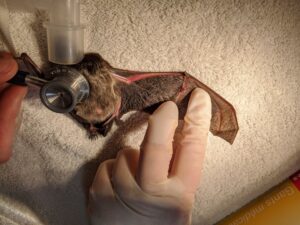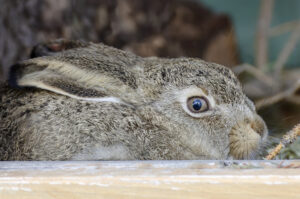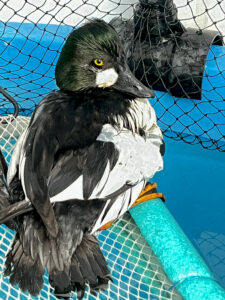What is Citizen Science?
In order to produce meaningful information and develop science-based programs, researchers need to have access to huge amounts of data. But building these data banks often demands time and an ability to cover geographical areas individual scientists cannot manage alone. That is where citizen science comes in.
As the name implies, citizen science means including the public in the research process. Participants usually need little to no experience, just an interest in the topic and a willingness to be involved.1 Depending on the project, participation can be contributive, where members of the public gather data; collaborative, where they are also involved in data analysis and interpretation; or co-created, with citizen scientists being involved every step of the way.2 A successful program usually includes basic skill training to give volunteers confidence in their abilities and a sense of ownership over the issue.1 The best programs also raise awareness for the topic being examined and encourage volunteers to respond in their everyday lives.3
While citizen science is present in every field of research, it is especially common in ecological initiatives.4 Research subjects in this discipline are often widespread and, in the case of animals, mobile. Samples from small areas are usually insufficient for finding trends over time or space, but data collection in larger areas demands significant costs, time and energy.5 Public participation provides an alternative that quickly builds the data banks necessary for the conservation of species, populations and habitats.6 Best of all, citizen science projects can usually be completed as participants go about their everyday lives or enjoy activities they would be doing anyway!
Local Programs
There are a number of ways to become a citizen scientist in Alberta. The Alberta Conservation Association (ACA) has a variety of ongoing and previously successful projects.
Alberta Volunteer Amphibian Monitoring Program
The Alberta Volunteer Amphibian Monitoring Program is an ACA project that began 30 years ago to keep track of amphibians and reptiles across the province.7 It is free to sign up here. From there, observations can be made while gardening, hiking, camping, fishing or any other time an amphibian or reptile is encountered.8 Once recorded on the website, the data is used to support knowledge of species distribution and inform the creation of conservation programs and further research. In addition, the website provides lots of free resources about these important species, including identification keys and guides on how to create an amphibian-friendly yard.
ABHuntLog
The ABHuntLog was launched in 2021 in collaboration with ACA, the iHunter app and the University of Alberta.9 It depends on a group of people who are already in an ideal position to spot and report on a variety of wildlife: hunters. Using the iHunter app, participants can report sightings of waterfowl, deer, elk, moose, coyotes, bears and more, as well as record information like the sex, age and location of these animals. While the ABHuntLog does not replace current wildlife management surveys, which are commonly conducted from helicopters, it supplements this method enough to cut back on costs, fill in gaps and provide widespread, long-term data.
Pronghorn Xing
An ACA program that recently ended is the Pronghorn Road Crossing Enhancement, shortened to Pronghorn Xing. Citizen observations of pronghorn on or near the Trans-Canada Highway in southeastern Alberta helped to identify frequent crossing areas, called pinch points.10 Pronghorn, one of Alberta’s most unique herbivores, migrate north to south and vice versa across this region, with the highway being a major obstacle. By finding out where these animals are most likely to cross and create a risk to both themselves and motorists, researchers can plan ways to reduce this problem. A goal of the program is to support the construction of overpasses, which have successfully reduced animal-vehicle collisions in National Parks across the country.
Recruitment of citizen scientists also occurs elsewhere in Alberta. Universities often have a need for public contributions, and other institutions have had success using publicly collected data to inform population dynamics and risk management for endangered species.11
International Programs
Other citizen science programs are available to volunteers worldwide. This is useful when the targets are animals that can cross international borders, such as birds.
The Great Backyard Bird Count
As one of two international winter bird counts, the Great Backyard Bird Count (GBBC) compiles bird sightings and calls by number and species.12 Since 1998, it has taken place for 4 days in February, in association with the National Audubon Society, the Cornell Lab of Ornithology and Birds Canada. Participants can sign up online and submit observations with the eBird app. While 15 minutes is the minimum requirement for participation, volunteers can continue birdwatching and tracking sightings for as long as they wish.
Christmas Bird Count
The Christmas Bird Count, organized by the National Audubon Society and Birds Canada, is similar to the GBBC.13 Since 1900, it has collected bird sightings from citizen scientists across North America.14 For 2 weeks at the end of the year, volunteers count birds as part of a “circle,” i.e., groups of birders who record sightings within a geographic circle with a diameter of 24 km.15 The benefit of a group setting is the opportunity for newcomers to be paired with experienced birders who can pass on knowledge of the activity and the initiative.16 Participants can find and join Canadian circles online here. Both this and the GBBC provide long-term data on some of the most widespread species in the world.17
Downloadable Apps
Free smartphone apps provide a way to quickly and easily join citizen science programs at any time. iNaturalist is a popular app run by the National Geographic Society and the California Academy of the Sciences.18 It aids in the identification of many plants and animals and allows users to contribute findings to data banks. Another is eBird, which is needed to participate in the GBBP.19 Users can continue to contribute sightings throughout the year and be a part of an international birding community.20
There are many other places to get involved in projects covering various topics and species. These are just some suggestions to get started!
References
- Isley, C.F.; Fry, K.L.; Sharp, E.L.; Taylor, M.P. Bringing citizen science to life: Evaluation of a national citizen science program for public benefit. Environ Sci and Pol. 2022 [accessed August 9, 2022]; https://doi.org/10.1016/j.envsci.2022.03.015
- Keyles, S. Citizen science, important tool for researchers. Science Connected. 2018 Sept 13 [accessed August 9, 2022]; https://magazine.scienceconnected.org/2018/09/citizen-science-important-tool/#:~:text=Citizen%20Science%20Informs%20Research%20and%20Policy&text=This%20is%20great%20help%20for,societies%20and%20communities%20as%20well.
- Isley; Sharp; Taylor. Bringing citizen science to life.
- Sorensen A.; Milligan, S.; Larsen, T.; Graham, K.; Eiken, H.G.; Hagen, S.; Aarne, S.G.; Bardalen Fløystad, I.M.; Stenhouse, G. Using scat DNA and citizen science to determine grizzly bear distribution and abundance in West-Central, Alberta. Report prepared for ACA and AEP. 2017 [accessed August 9, 2022]; https://friresearch.ca/sites/default/files/GBP_2017_01_Scat%20Report.pdf.
- Isley; Sharp; Taylor. Bringing citizen science to life.
- Isley; Sharp; Taylor. Bringing citizen science to life.
- Government of Alberta. Alberta volunteer amphibian monitoring program. Edmonton (AB): Government of Alberta; 2022 [accessed August 9, 2022]; https://www.alberta.ca/alberta-volunteer-amphibian-monitoring-program.aspx#:~:text=The%20Alberta%20Volunteer%20Amphibian%20Monitoring,World%20Conservation%20Union%20(IUCN)
- Alberta Conservation Association. Alberta volunteer amphibian monitoring program. AB: Alberta Conservation Association; 2022 [accessed August 9, 2022]; https://www.ab-conservation.com/avamp/overview/.
- Alberta Conservation Association. ABHuntLog 2021/22 Project Summary Report. AB: Alberta Conservation Association; 2022 [accessed August 9, 2022]; https://www.ab-conservation.com/downloads/annual_summaries/wildlife/aca_summary_2021-2022_abhuntlog.pdf.
- Alberta Conservation Association. Pronghorn Road Crossing Enhancement 2021/2022 Project Summary Report. AB: Alberta Conservation Association; 2022 [accessed August 9, 2022]; https://www.ab-conservation.com/downloads/annual_summaries/wildlife/aca_summary_2021-2022_pronghorn_road_crossing_enhancement.pdf.
- Sorensen; Milligan; Larsen; Graham; Eiken; Hagen; Aarne; Bardalen Fløystad; Stenhouse. Using scat DNA and citizen science.
- Great Backyard Bird Count. Ithaca (NY): Cornell University; 2022 [accessed August 9, 2022]; https://www.birdcount.org/about/.
- Audubon Christmas Bird Count. National Audubon Society; 2022 [accessed August 9, 2022]; https://www.audubon.org/conservation/science/christmas-bird-count.; Christmas Bird Count. Port Rowan (ON): Birds Canada; 2022 [accessed August 9, 2022]; https://www.birdscanada.org/bird-science/christmas-bird-count/.
- Audubon Christmas Bird Count. National Audubon Society
- Audubon Christmas Bird Count. National Audubon Society; Christmas Bird Count. Port Rowan (ON): Birds Canada
- Audubon Christmas Bird Count. National Audubon Society
- Great Backyard Bird Count. Ithaca (NY): Cornell University; Audubon Christmas Bird Count. National Audubon Society
- iNaturalist. San Francisco (CA): California Academy of Sciences; 2022. About; [accessed August 9, 2022]; https://www.inaturalist.org/pages/about
- Great Backyard Bird Count. Ithaca (NY): Cornell University
- eBird. Ithaca (NY): Cornell University; 2022. About [accessed August 9, 2022]; https://ebird.org/about





